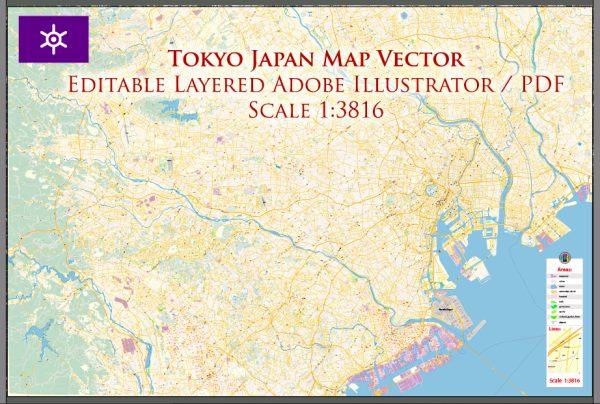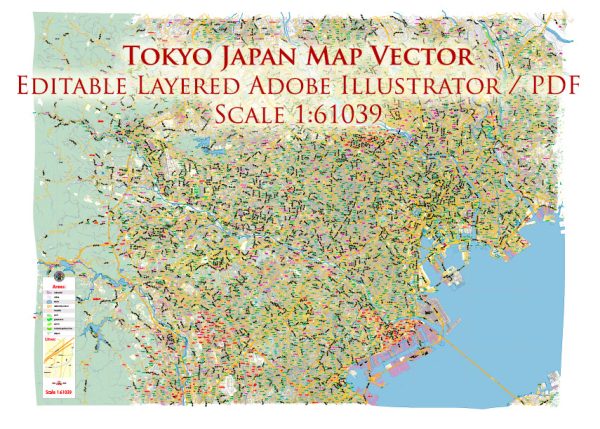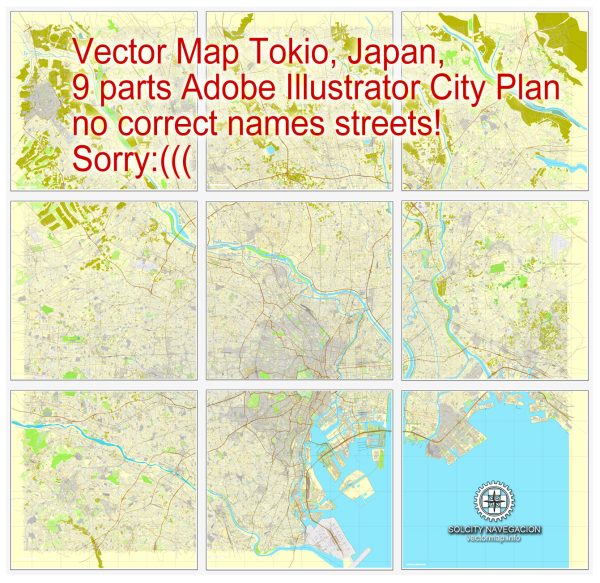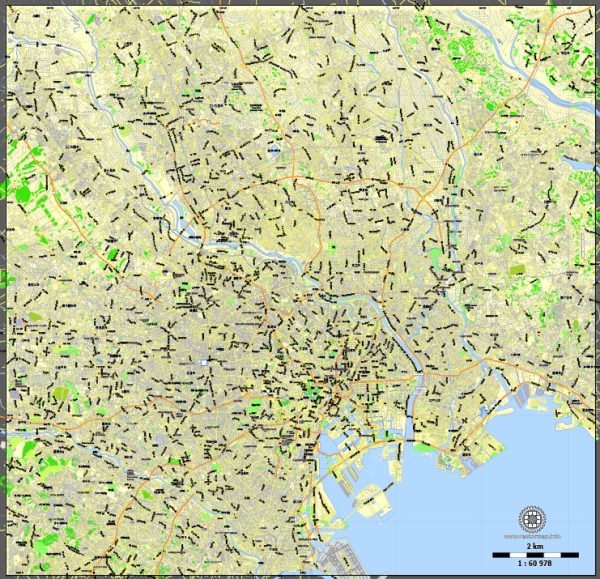Tokyo, the capital city of Japan, is one of the most populous and vibrant urban centers in the world. Its urban development is characterized by a unique blend of traditional and modern elements, and it has undergone significant transformation over the years. Here is a description of Tokyo’s urban development:
- Historical Background: Tokyo has a rich history that dates back centuries. Originally known as Edo, it was a small fishing village that grew into a significant city during the Edo period (17th to 19th centuries) when it became the political and administrative center of Japan. The city’s layout was characterized by a well-planned grid system of streets and canals, which still influences some aspects of its urban design today.
- Modernization and Expansion: Tokyo underwent a dramatic transformation during the Meiji Restoration in the late 19th century when Japan opened up to the world and began a process of rapid modernization. The city’s name was changed to Tokyo (meaning “Eastern Capital”) in 1868. As part of this modernization, extensive infrastructure development, the introduction of Western-style architecture, and the construction of railroads and bridges took place.
- Post-World War II Reconstruction: Tokyo was heavily bombed during World War II, resulting in significant damage to the city’s infrastructure. However, in the post-war period, Tokyo was rebuilt and expanded, leading to the development of high-rise buildings, modern transportation networks, and an efficient urban layout.
- Contemporary Tokyo: Today, Tokyo is known for its densely populated neighborhoods, cutting-edge technology, and a mix of architectural styles. It is a city that juxtaposes historic temples and shrines with sleek skyscrapers. Key elements of Tokyo’s urban development include:
- High-density living: Tokyo is famous for its compact living spaces, small apartments, and tall residential buildings to accommodate its large population.
- Efficient public transportation: Tokyo boasts one of the most efficient and extensive public transportation systems in the world, including an extensive subway and commuter rail network.
- Urban parks and green spaces: Despite its density, Tokyo incorporates numerous parks and green spaces, such as Ueno Park and Yoyogi Park, which provide recreational areas for residents.
- Mixed land use: Tokyo often mixes residential, commercial, and retail spaces in the same neighborhoods, making it convenient for residents to access essential services.
- Planning and Zoning: Tokyo has a comprehensive zoning system in place to regulate land use and development. The city is divided into multiple wards (ku), each with its own urban development plans and regulations. This allows for a degree of decentralization in planning and development.
- Seismic Considerations: Tokyo is located in a seismically active region, so urban development places a strong emphasis on earthquake-resistant buildings and infrastructure to minimize the impact of earthquakes on the city’s residents.
- Ongoing Development: Tokyo’s urban development is an ongoing process. The city continuously adapts to the changing needs of its population and seeks to balance modernization with the preservation of its historical and cultural heritage.
In summary, Tokyo’s urban development is a dynamic blend of historical tradition and modern innovation, characterized by efficient transportation, high population density, and a commitment to safety and sustainability in a seismically active region. The city’s ever-evolving landscape is a testament to its resilience and adaptability.





 Author: Kirill Shrayber, Ph.D.
Author: Kirill Shrayber, Ph.D.